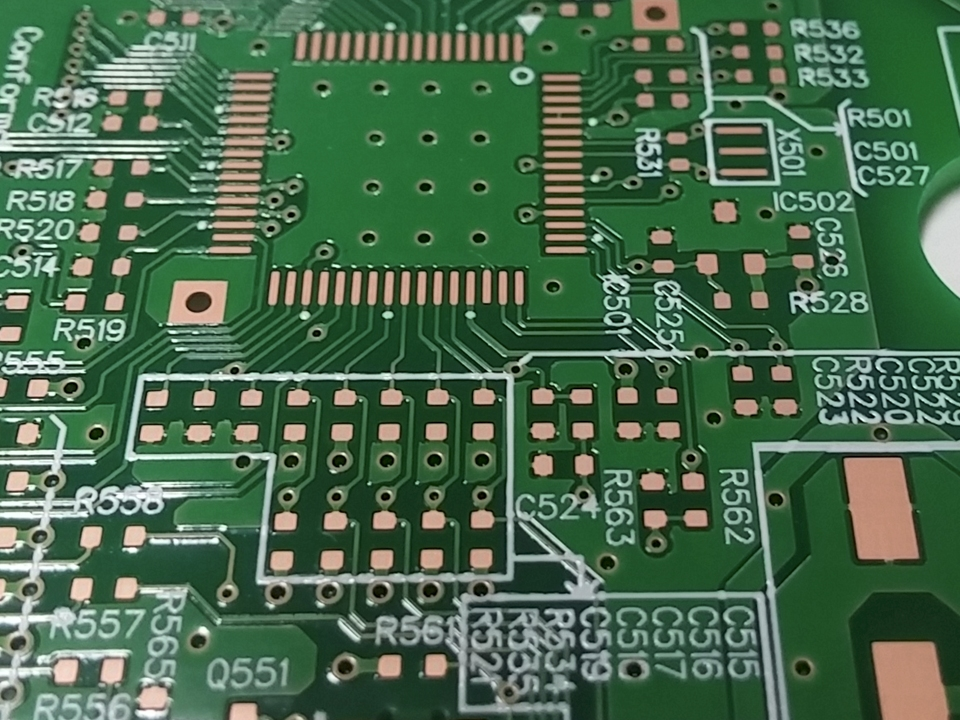The Organic Solderability Preservative (OSP) process, as a commonly used PCB surface treatment method, relies on the principle of forming a protective film on the PCB surface using an organic solder resist. This protective film, applied through coating methods like dipping or spraying, serves to shield the exposed copper surface from oxidation and contamination during manufacturing and transportation.

Characteristics of OSP
Thin and Uniform Coating
The OSP coating is usually very thin, generally between 0.2 – 0.5 microns, and does not have a significant impact on the electrical performance of the PCB. At the same time, the OSP process can form a uniform coating on the PCB surface to ensure that each solder joint is well protected.
The OSP coating is usually very thin, generally between 0.2 – 0.5 microns, and does not have a significant impact on the electrical performance of the PCB. At the same time, the OSP process can form a uniform coating on the PCB surface to ensure that each solder joint is well protected.
Environmental Friendliness
The OSP process uses water-soluble organic compounds and does not contain harmful substances such as lead, mercury, and cadmium, meeting environmental protection requirements. During the production process, the wastewater and waste gas generated by the OSP process are relatively small, causing less pollution to the environment.
The OSP process uses water-soluble organic compounds and does not contain harmful substances such as lead, mercury, and cadmium, meeting environmental protection requirements. During the production process, the wastewater and waste gas generated by the OSP process are relatively small, causing less pollution to the environment.
Low Cost
Compared with other surface treatment methods, the cost of the OSP process is relatively low. The material cost of the OSP coating is low, and the production process is simple, without the need for complex equipment and processes, thereby reducing the production cost of the PCB.
Compared with other surface treatment methods, the cost of the OSP process is relatively low. The material cost of the OSP coating is low, and the production process is simple, without the need for complex equipment and processes, thereby reducing the production cost of the PCB.
Advantages of OSP
Suitable for Fine Pitch Soldering
Because the OSP coating is thin and uniform and does not have a significant impact on the electrical performance of the PCB, it is very suitable for fine pitch soldering. In high-density PCBs and miniaturized electronic products, the OSP process can ensure good soldering quality and improve the reliability of electronic products.
Because the OSP coating is thin and uniform and does not have a significant impact on the electrical performance of the PCB, it is very suitable for fine pitch soldering. In high-density PCBs and miniaturized electronic products, the OSP process can ensure good soldering quality and improve the reliability of electronic products.
Easy Rework
If there are problems during the soldering process, PCBs treated with OSP are relatively easy to rework. The solder joints can be repaired by cleaning and re-applying the OSP coating without causing serious damage to the PCB.
If there are problems during the soldering process, PCBs treated with OSP are relatively easy to rework. The solder joints can be repaired by cleaning and re-applying the OSP coating without causing serious damage to the PCB.
Good Compatibility
Compared with other surface treatment methods, the OSP process has better compatibility. It can be used in combination with various solders and soldering processes without compatibility issues. At the same time, the OSP coating does not affect other properties of the PCB, such as electrical insulation and corrosion resistance.
Compared with other surface treatment methods, the OSP process has better compatibility. It can be used in combination with various solders and soldering processes without compatibility issues. At the same time, the OSP coating does not affect other properties of the PCB, such as electrical insulation and corrosion resistance.
In conclusion, the organic solderability preservative (OSP) process, as a commonly used PCB surface treatment method, has characteristics such as good solderability, thin and uniform coating, environmental friendliness and low cost, as well as advantages such as suitability for fine-pitch soldering, good heat resistance, easy rework and good compatibility. In the manufacturing process of PCBs, choosing the appropriate surface treatment method is crucial for improving the quality and reliability of PCBs.
